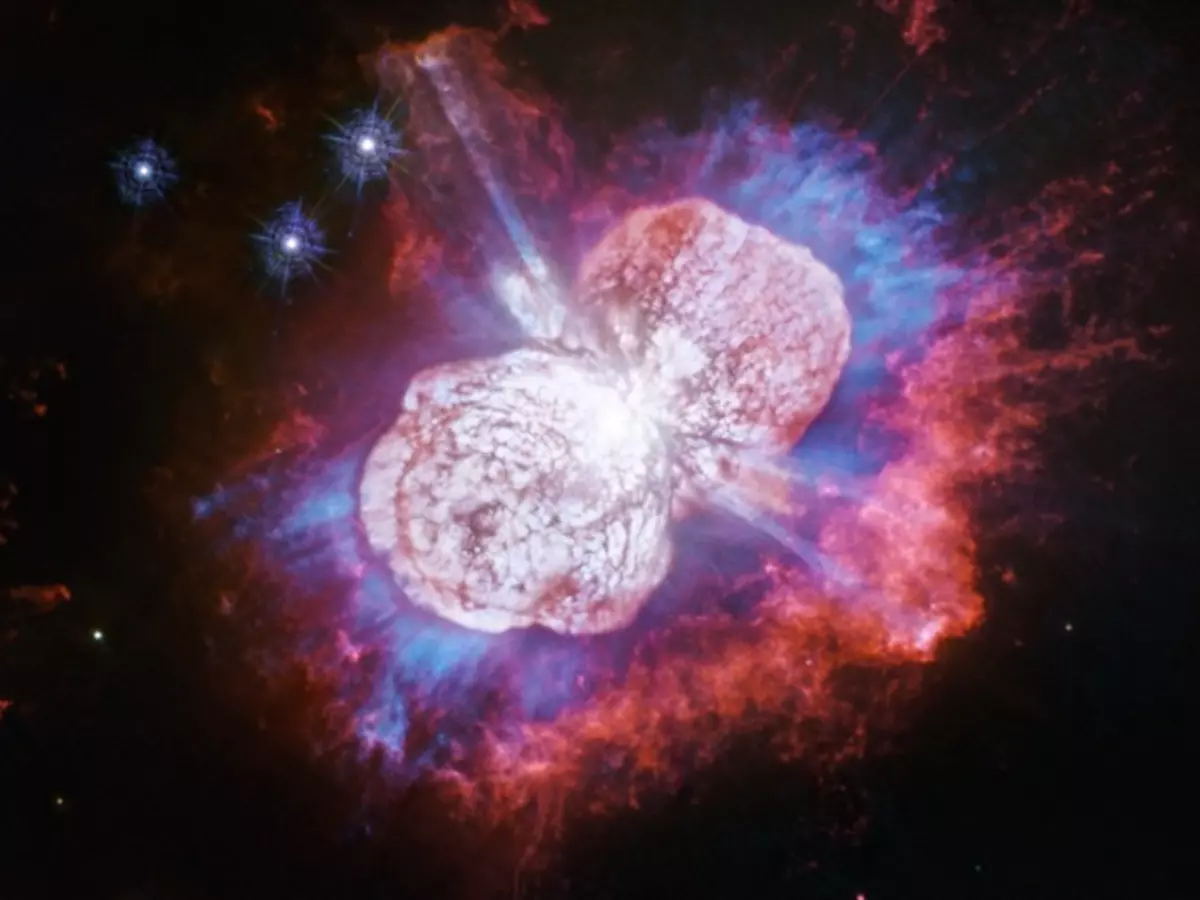Slow Motion Firework: Amazing Story Of A Star That Exploded But Didn't Die
The National Aeronautics and Space Administration NASA has shared what it might look like if fireworks were to go off in the vast expanse of space. The image now gaining admiration online looks like the fireworks are going off in a slow-motion painting a coloured canvas in space NASA says that the image represents over 150 years of a stars shine. It shows a doomed supermassive star named Eta Carinae Located 7500 light-years away in the Carina Neb...Read More

The National Aeronautics and Space Administration (NASA) has shared what it might look like if fireworks were to go off in the vast expanse of space.
The image, now gaining admiration online, looks like the fireworks are going off in a slow-motion, painting a coloured canvas in space.
 NASA
NASA
NASA says that the image represents over 150 years of a star¡¯s shine. It shows a ¡°doomed¡± supermassive star named Eta Carinae. Located 7,500 light-years away in the Carina Nebula, Eta Carinae's image was captured by NASA scientists using the Hubble telescope.
As per NASA, Eta Carinae has held importance in human history. The massive star experienced a massive outburst in the 1840s, making it the second brightest star in the visible sky (previously 4th) for over a decade. This cosmic event is known as the "Great Eruption".
NASA¡¯s post explains that the explosion of the star in the 1840s made it so bright that the ¡°sailors at the time used it as an important navigational star in the southern seas.¡±
Eta Carinae, also called Homunculus Nebula, is a binary star system. The main star in this system is considered to be about 100 times more massive than the Sun and ¡°is expected to become a supernova in the next several thousand years,¡± explains a Britannica report.
In a note, NASA explains how the image was captured. As per the US space agency, the three types of light depict the three information channels. White light represents the optical data from Hubble. Cyan shows the ultraviolet light captured using Hubble, and Purple emissions mark the X-rays captured using Chandra.
NASA is known to share such wondrous captures made through various technologies. It recently shared a video of a 'cosmic dance' depicting two intertwined galaxies. An image of an Einstein ring that looks just like a 'molten ring' also made its way to the agency's social media account recently.
